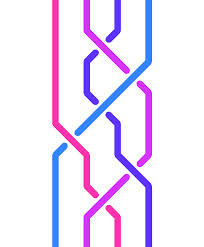Description
 We can find braids - made of hair, leather, silk, rope, gold or bread - in human cultures all over the world and and throughout history. They are also not hard to describe algebraically, and naturally form groups, which we shall study in some detail. For example, asking whether two braids would be the same if pulled tight is equivalent to the word problem in the group.
We can find braids - made of hair, leather, silk, rope, gold or bread - in human cultures all over the world and and throughout history. They are also not hard to describe algebraically, and naturally form groups, which we shall study in some detail. For example, asking whether two braids would be the same if pulled tight is equivalent to the word problem in the group.Braids are related to knots and links, and you will be able to draw on the first half of Geometric Topology II. Braid-like structures also occasionally arise in nature (convection, DNA, even the rings of Saturn), and previous students have investigated braids in the context of cryptography, and of decidability. There is also a natural relation to bell-ringing.
Possible applications apart, even sticking to the abstract group theory, we can experiment and get ideas using actual 3D braids, and argue using pictures of them alongside the notation. So this topic may appeal to you if you like to be able to represent abstract ideas visually.
Prerequisites
Algebra II and Geometric Topology II.Resources
- Wikipedia provides an introduction, and some links.
- We'll start by working through the first few chapters of A Study of Braids, by K.Murasagi and B.I.Kurpita.
- How to make a "mystery braid", on Youtube.
- There also is a series of excellent animations on Youtube, made by Ester Dalvit. Here is the first one.